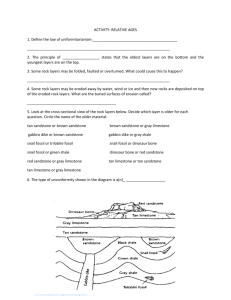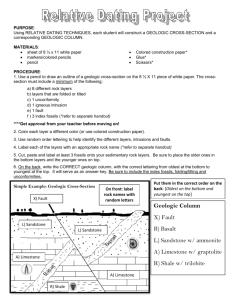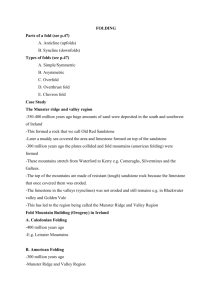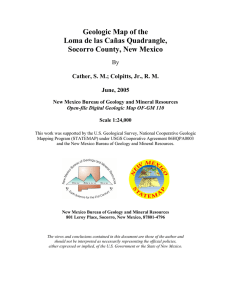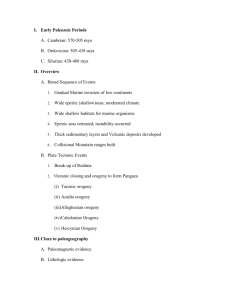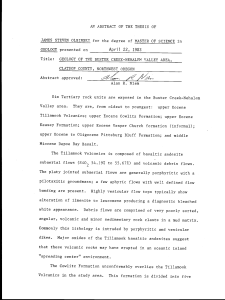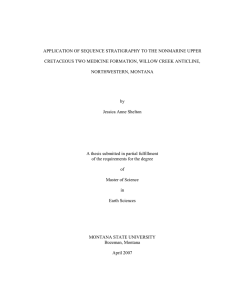DÜZCE GEOLOGY
advertisement
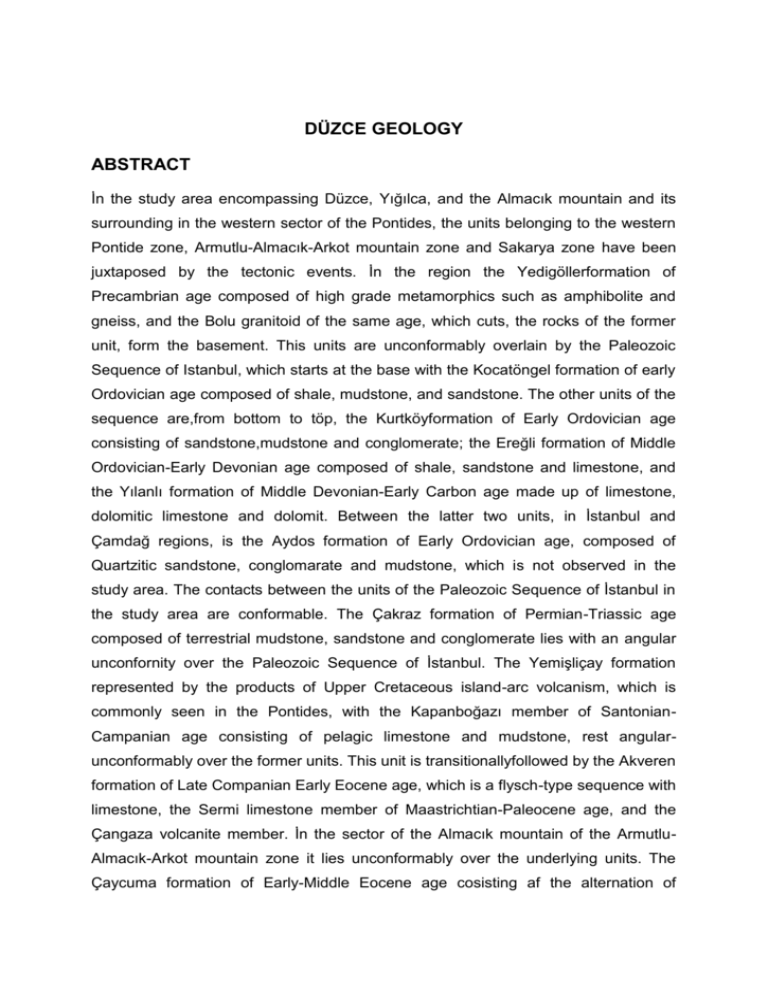
DÜZCE GEOLOGY ABSTRACT İn the study area encompassing Düzce, Yığılca, and the Almacık mountain and its surrounding in the western sector of the Pontides, the units belonging to the western Pontide zone, Armutlu-Almacık-Arkot mountain zone and Sakarya zone have been juxtaposed by the tectonic events. İn the region the Yedigöllerformation of Precambrian age composed of high grade metamorphics such as amphibolite and gneiss, and the Bolu granitoid of the same age, which cuts, the rocks of the former unit, form the basement. This units are unconformably overlain by the Paleozoic Sequence of Istanbul, which starts at the base with the Kocatöngel formation of early Ordovician age composed of shale, mudstone, and sandstone. The other units of the sequence are,from bottom to töp, the Kurtköyformation of Early Ordovician age consisting of sandstone,mudstone and conglomerate; the Ereğli formation of Middle Ordovician-Early Devonian age composed of shale, sandstone and limestone, and the Yılanlı formation of Middle Devonian-Early Carbon age made up of limestone, dolomitic limestone and dolomit. Between the latter two units, in İstanbul and Çamdağ regions, is the Aydos formation of Early Ordovician age, composed of Quartzitic sandstone, conglomarate and mudstone, which is not observed in the study area. The contacts between the units of the Paleozoic Sequence of İstanbul in the study area are conformable. The Çakraz formation of Permian-Triassic age composed of terrestrial mudstone, sandstone and conglomerate lies with an angular unconfornity over the Paleozoic Sequence of İstanbul. The Yemişliçay formation represented by the products of Upper Cretaceous island-arc volcanism, which is commonly seen in the Pontides, with the Kapanboğazı member of SantonianCampanian age consisting of pelagic limestone and mudstone, rest angularunconformably over the former units. This unit is transitionallyfollowed by the Akveren formation of Late Companian Early Eocene age, which is a flysch-type sequence with limestone, the Sermi limestone member of Maastrichtian-Paleocene age, and the Çangaza volcanite member. İn the sector of the Almacık mountain of the ArmutluAlmacık-Arkot mountain zone it lies unconformably over the underlying units. The Çaycuma formation of Early-Middle Eocene age cosisting af the alternation of sandstone, siltstone and claystone, and the Yığılca formation af the same age composed of lavas and agiomerates and tuffs are ttransitional with the Akveren formation; where it is absent they lie unconformabiy over the underiying units. Within the Armutlu Almacık-Arkot mountain zone the Almacık ophiolitic melange of late Cretaceous age, the units belonging to the Paleozoic sequence of Istanbul, which have a tectonic relationship with the former unit, and the Abant formation of late Campanian-Early Eocene age characterized by an olistostromal-turbiditic sequence, lie. İn the westward continuation of the Safranbolu basin representing an intermountains shallow-marine the Doğanlar volcanite member belonging to the Kışlaköy farmation of late Danian-Tanesian age, and the Safranbolu formation of Early-Middle Eocene age made up of limestones, which lies conformabiy on the former unit, crop out. İn the southern sector of the study area the units of the Sakarya Zone are the Mudurnuformation of Early-Middle Jurassic age with an alternation of volcanic and sedimentary rocks, the Soğukçam formation of Callovian-Aptian age composed of limestones, which overlies transitionaliy the former one, the Yenıpazarformation ofAlbian-Maastrichtian age characterized by a turbiditic sequence, which iles conformabiy over the former unit, and the Meyildere volcanite of late Paleocene-Early Eocene age, which cuts the former unit. The Kiraz mountain volcanite, Ilıcadere volcanite, and the Bakacaktepe volcanite, which are composed of volcanic rocks, of Early-Middle Miocene age, and the Örencik formation of Pliocene age, composed of terrestrial clastics, and the deposits of Quaternaıy age are seen as younger units. İn Pre-late Campanian to Maastrichtian times the Paleozoic sequence of Istanbul must have been empiaced over the Almacık ophiolitic melange. İn the region Miocene and post-Miocene neotectonic movements have been continuing atpresent.


